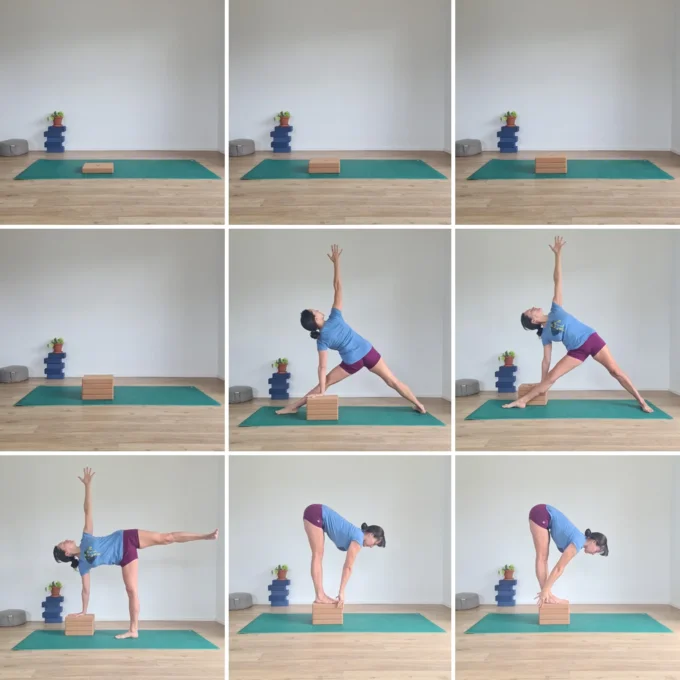A yoga block is a tool used to provide support, stability, and improve alignment when performing yoga poses. Its use dates back to the second half of the 20th century and is closely linked to the development of modern yoga, particularly influenced by the Indian master B.K.S. Iyengar.
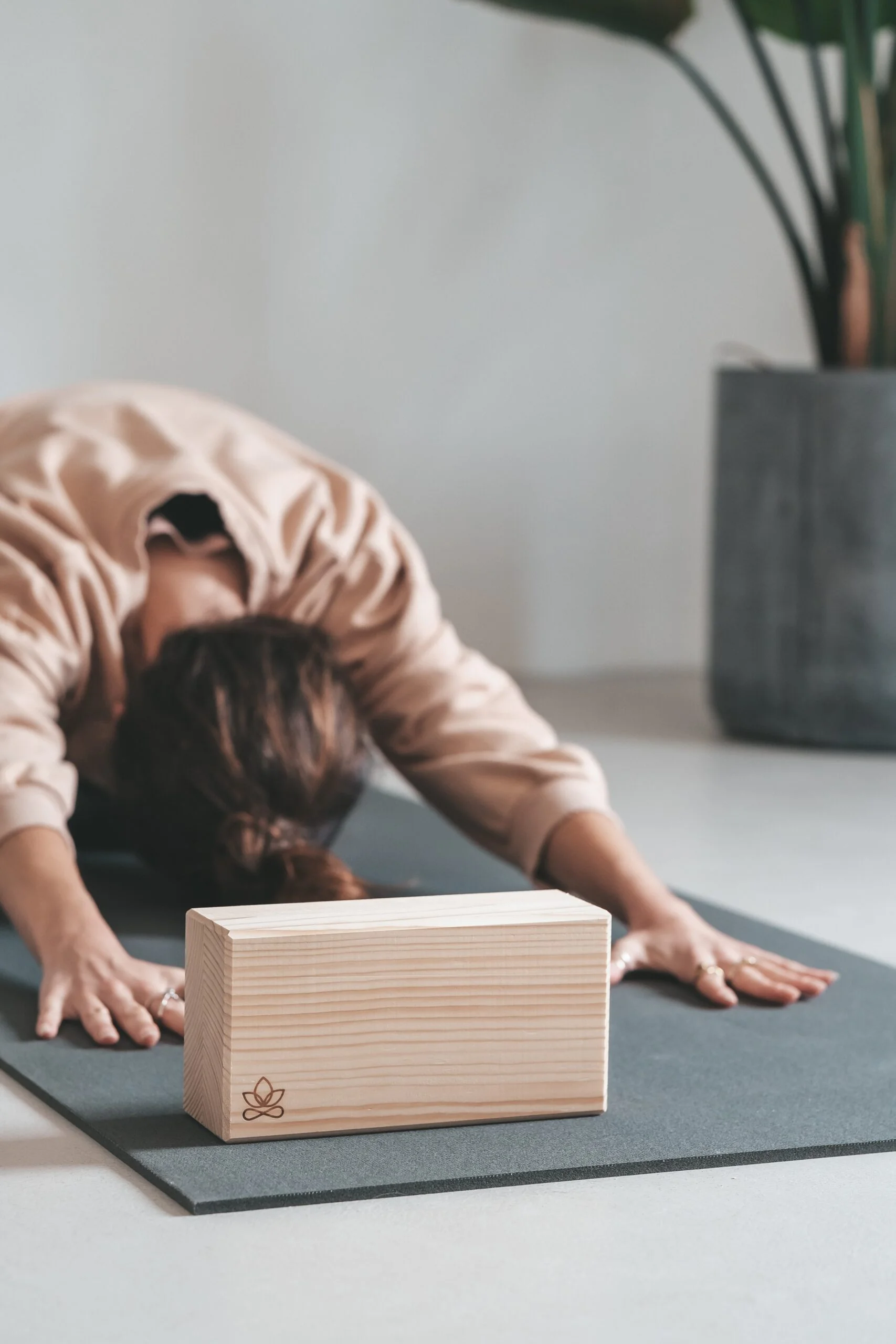
History of the Yoga Block
B.K.S. Iyengar, one of the most influential yoga teachers, emphasized precision and proper body alignment in his practices. To make yoga accessible to everyone, regardless of physical limitations, he began using various props such as straps, chairs, blankets, and also wooden blocks – the predecessors of today's yoga blocks. His method, known as Iyengar Yoga, contributed to the widespread use of blocks, helping students maintain stability and more easily achieve challenging poses.
Over time, yoga blocks evolved, transitioning from heavy wooden blocks to lighter materials like cork and foam, which are more popular today. They are used in various yoga styles, from Iyengar Yoga to Vinyasa Yoga and yoga for beginners, as they help improve flexibility, balance, and confidence during practice.
Today, yoga blocks are an essential tool in many yoga studios and home practices worldwide.
A yoga block is a versatile tool used to improve alignment, stability, and comfort when performing yoga poses. Its use is beneficial for both beginners and experienced yogis.
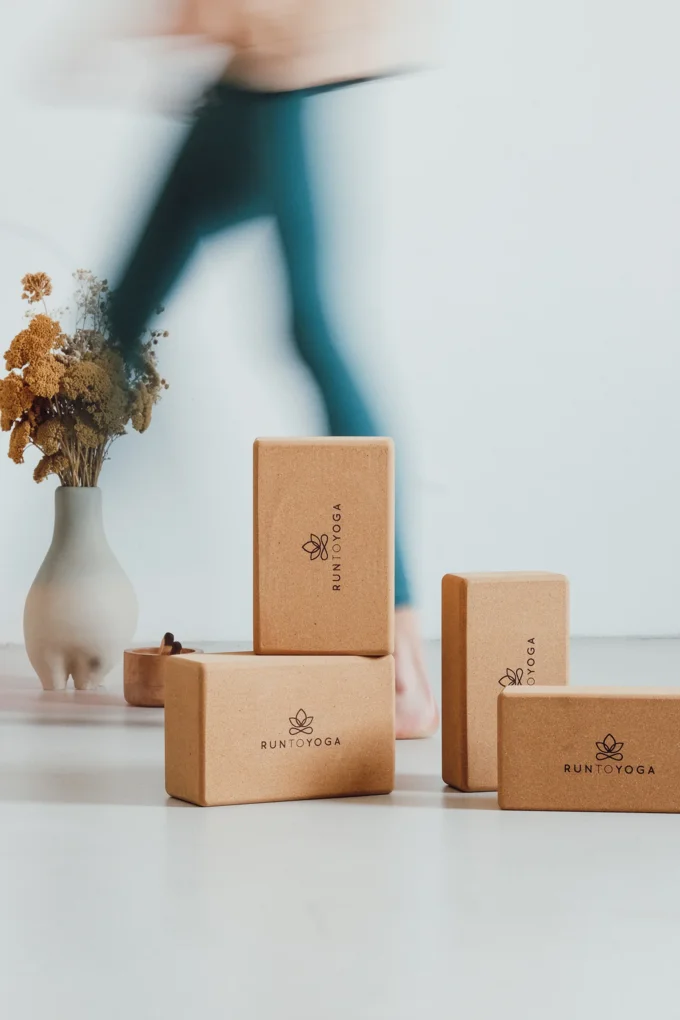
Main reasons for using a yoga block
- Support for more challenging poses – A block makes it easier to achieve poses that require more flexibility, such as forward bends or seated poses.
- Improving stability and balance – It helps maintain proper balance, especially in standing poses like Trikonasana (Triangle Pose).
- Adjusting intensity – It allows for gradual deepening of stretches and prevents overstretching, reducing the risk of injury.
- Increased comfort – In seated poses (e.g., Sukhasana – Easy Pose), it raises the hips and makes long periods of sitting in meditation more comfortable.
- Assistance with rehabilitation – People with limited mobility or injuries can use the block to adjust poses and practice safely.
A block is therefore an excellent tool for deepening your practice, improving technique, and boosting confidence in performing yoga poses.
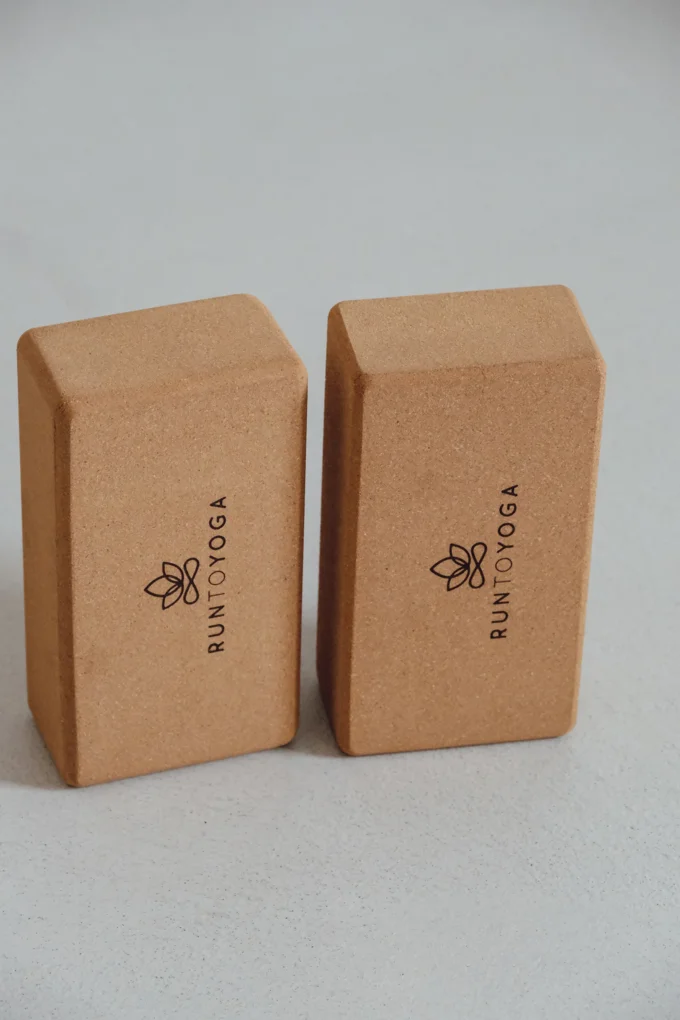
When is one block sufficient?
- If you primarily use it for support in seated or standing poses.
- When you need just a little support in stretching or forward bends.
- For meditation, to raise the hips.
When are two blocks recommended?
- If you frequently perform poses that require symmetrical support (e.g., Bridge Pose – Setu Bandhasana, Cobra Pose – Bhujangasana).
- In Iyengar Yoga, where blocks are used for more precise alignment.
- If you're a beginner and need extra stability in standing and balancing poses.
- In deep stretches, such as those for chest opening or splits.
If you’re just starting with yoga, you can try using one block first and later add another if you find you need extra support.
The size of a yoga block depends on your height, flexibility level, and usage. Standard blocks typically come in three different sizes, allowing for height adjustment depending on the pose, as they can be placed in three different ways (low, medium, or high).
Common yoga block sizes:
- Standard block ( 22,5 x 14,5 x 9,5 cm) – The most commonly used size, suitable for most practitioners. It’s big enough to provide support but not too large to be cumbersome.
- Larger block (22,5 x 14,5 x 7,5 cm) – Ideal for people with less flexibility, as it offers more support and height. Great for beginners.
- Smaller block (22,5 x 12 x 7,5 cm) – More compact, lighter to carry, and suitable for those who don't need much support.
How to choose the right size?
- If you’re a beginner or have less flexibility, choose a larger block as it will offer more support.
- If you’re an experienced yogi and need a block for fine adjustments, the standard size is your best option.
- If you travel often or want something lighter, consider a smaller block.
Regardless of size, it’s also important to choose the right material (cork, foam, or wood) based on whether you need a softer or firmer support.
Choosing between wood and cork depends on your needs and personal preferences. Both options have their advantages and disadvantages
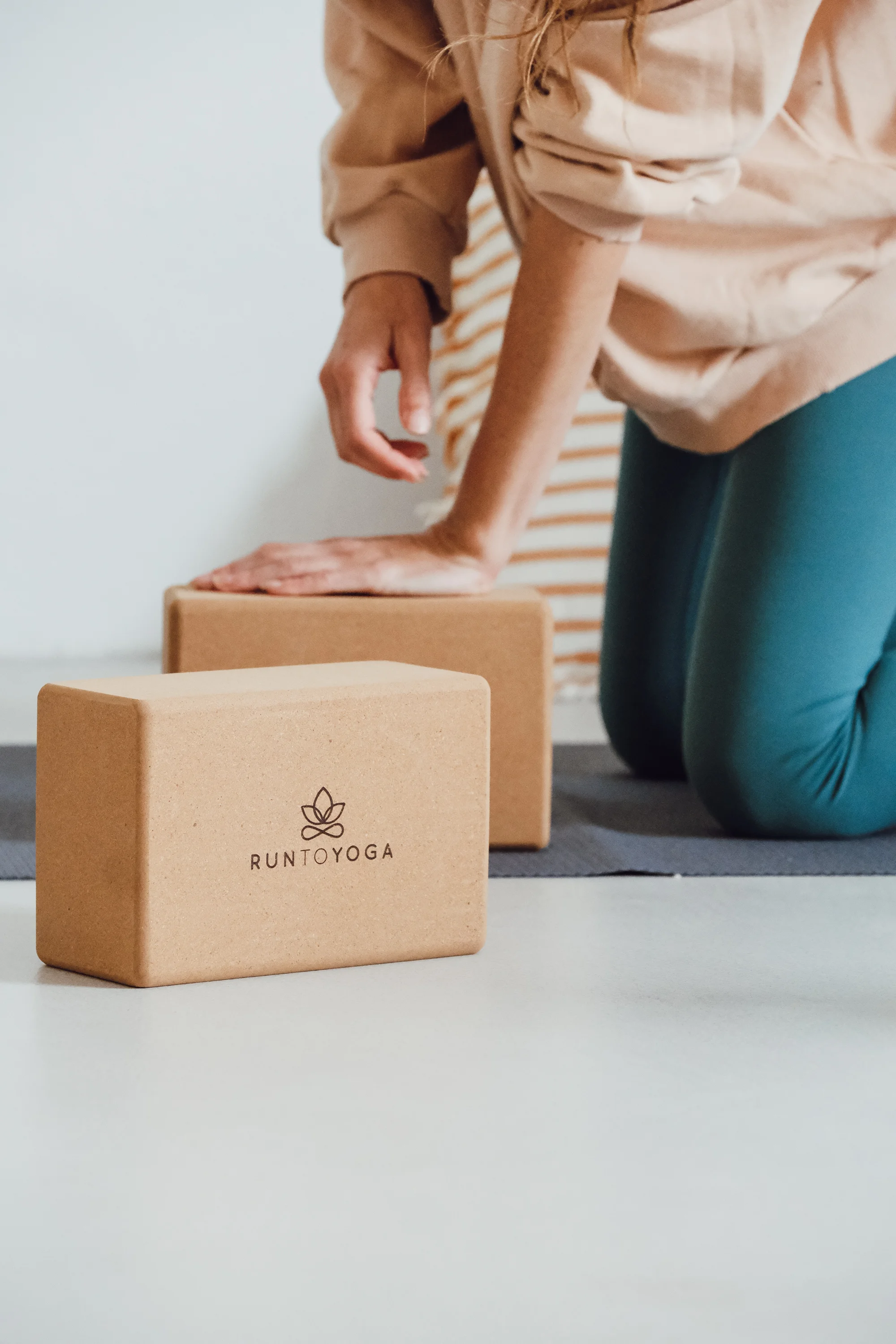
- Very firm and stable – does not give under weight.
- Durable and long-lasting – withstands years of use.
- Natural look and feel.
Cons:
- Harder and less comfortable on sensitive areas of the body.
- Heavier and less practical to carry.
- Can become slippery if your hands are sweaty.
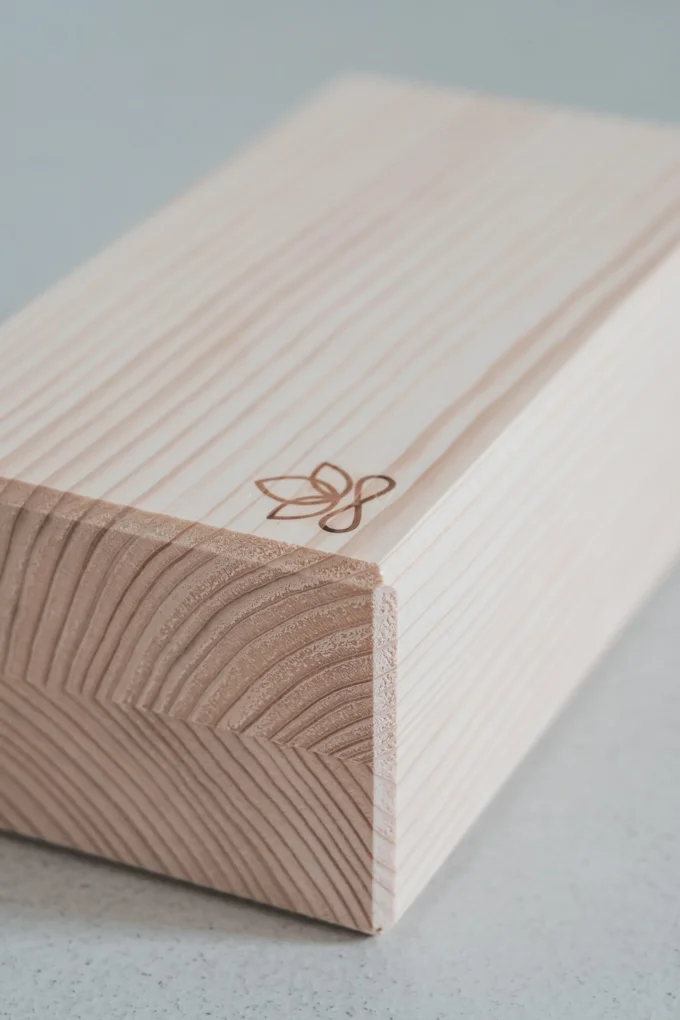
Cork block
- Lighter than wood, making it easier to carry.
- Firm, yet softer and more comfortable to the touch.
- Better grip, even if your hands sweat.
- Eco-friendly choice – cork is a natural and sustainable material.
Cons:
- Less durable than wood, as it can wear out or crumble over time.
- Slightly less stable than a wooden block under heavy loads.
What’s best for you?
- If you need maximum stability and durability, choose a wooden block.
- If you prefer something lighter, softer, and more eco-friendly, cork is the better choice.
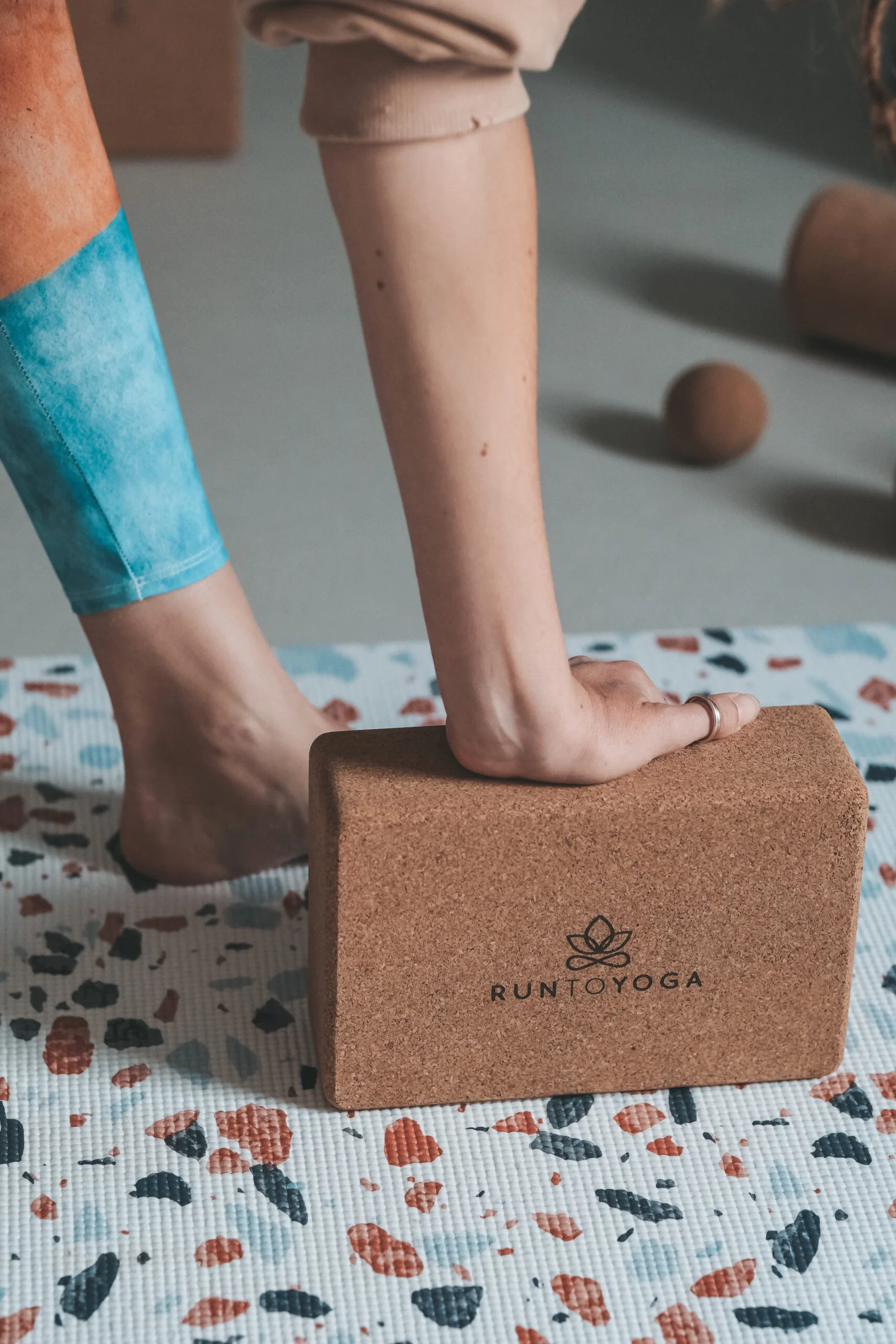
For beginners, cork is often more comfortable as it’s softer and provides a good grip. If, however, you prefer something long-lasting and stable, wood is an excellent choice.
A yoga block is a versatile prop that supports proper alignment, stability, and comfort during practice. It helps in standing poses like Utthita Trikonasana and Virabhadrasana II, as well as seated twists, where it supports the hands and back. With its adaptability, it accompanies your practice at all skill levels, allowing for a deeper connection with your body while enhancing focus and inner peace.
